Refrigerator
A refrigerator (colloquially fridge or fridge freezer in the UK) is a popular household appliance that consists of a thermally insulated compartment and a heat pump (mechanical, electronic or chemical) that transfers heat from the inside of the fridge to its external environment so that the inside of the fridge is cooled to a temperature below the ambient temperature of the room. Refrigeration is an essential food storage technique in developed countries. The lower temperature lowers the reproduction rate of bacteria, so the refrigerator reduces the rate of spoilage. A refrigerator maintains a temperature a few degrees above the freezing point of water. Optimum temperature range for perishable food storage is 3 to 5 °C (37 to 41 °F). A similar device that maintains a temperature below the freezing point of water is called a freezer. The refrigerator replaced the icebox, which had been a common household appliance for almost a century and a half. For this reason, a refrigerator is sometimes referred to as an icebox in American usage.
The first cooling systems for food involved using ice. Artificial refrigeration began in the mid-1750s, and developed in the early 1800s. In 1834, the first working vapor-compression refrigeration system was built. The first commercial ice-making machine was invented in 1854. In 1913, refrigerators for home use were invented. In 1923 Frigidaire introduced the first self-contained unit. The introduction of Freon in the 1920s expanded the refrigerator market during the 1930s. Home freezers as separate compartments (larger than necessary just for ice cubes) were introduced in 1940. Frozen foods, previously a luxury item, became commonplace.
Freezer units are used in households and in industry and commerce. Commercial refrigerator and freezer units were in use for almost 40 years prior to the common home models. The freezer-on-top-and-refrigerator-on-bottom style has been the basic style since the 1940s, until modern refrigerators broke the trend. A vapor compression cycle is used in most household refrigerators, refrigerator–freezers and freezers. Newer refrigerators may include automatic defrosting, chilled water, and ice from a dispenser in the door.
Domestic refrigerators and freezers for food storage are made in a range of sizes. Among the smallest is a 4 L Peltier refrigerator advertised as being able to hold 6 cans of beer. A large domestic refrigerator stands as tall as a person and may be about 1 m wide with a capacity of 600 L. Refrigerators and freezers may be free-standing, or built into a kitchen. The refrigerator allows the modern household to keep food fresh for longer than before. Freezers allow people to buy food in bulk and eat it at leisure, and bulk purchases save money.
Before the invention of the refrigerator, icehouses were used to provide cool storage for most of the year. Placed near freshwater lakes or packed with snow and ice during the winter, they were once very common. Natural means are still used to cool foods today. On mountainsides, runoff from melting snow is a convenient way to cool drinks, and during the winter one can keep milk fresh much longer just by keeping it outdoors. The word "refrigeratory" was used at least as early as the 17th century
The history of artificial refrigeration began when Scottish professor William Cullen designed a small refrigerating machine in 1755. Cullen used a pump to create a partial vacuum over a container of diethyl ether, which then boiled, absorbing heat from the surrounding air The experiment even created a small amount of ice, but had no practical application at that time.
In 1805, American inventor Oliver Evans described a closed vapor-compression refrigeration cycle for the production of ice by ether under vacuum. In 1820, the British scientist Michael Faraday liquefied ammonia and other gases by using high pressures and low temperatures, and in 1834, an American expatriate in Great Britain, Jacob Perkins, built the first working vapor-compression refrigeration system. It was a closed-cycle device that could operate continuously. A similar attempt was made in 1842, by American physician, John Gorrie,[5] who built a working prototype, but it was a commercial failure. American engineer Alexander Twining took out a British patent in 1850 for a vapor compression system that used ether.
The first practical vapor compression refrigeration system was built by James Harrison, a Scottish Australian. His 1856 patent was for a vapor compression system using ether, alcohol or ammonia. He built a mechanical ice-making machine in 1851 on the banks of the Barwon River at Rocky Point in Geelong, Victoria, and his first commercial ice-making machine followed in 1854. Harrison also introduced commercial vapor-compression refrigeration to breweries and meat packing houses, and by 1861, a dozen of his systems were in operation.
The first gas absorption refrigeration system using gaseous ammonia dissolved in water (referred to as "aqua ammonia") was developed by Ferdinand Carré of France in 1859 and patented in 1860. Carl von Linde, an engineering professor at the Technological University Munich in Germany, patented an improved method of liquefying gases in 1876. His new process made possible the use of gases such as ammonia (NH3), sulfur dioxide (SO2) and methyl chloride (CH3Cl) as refrigerants and they were widely used for that purpose until the late 1920s.
Domestic refrigerator
In 1913, refrigerators for home and domestic use were invented by Fred W. Wolf of Fort Wayne, Indiana with models consisting of a unit that was mounted on top of an ice box. In 1914, engineer Nathaniel B. Wales of Detroit, Michigan, introduced an idea for a practical electric refrigeration unit, which later became the basis for the Kelvinator. A self-contained refrigerator, with a compressor on the bottom of the cabinet was invented by Alfred Mellowes in 1916. Mellowes produced this refrigerator commercially but was bought out by William C. Durant in 1918, who started the Frigidaire company to mass-produce refrigerators. In 1918, Kelvinator company introduced the first refrigerator with any type of automatic control. The absorption refrigerator was invented by Baltzar von Platen and Carl Munters from Sweden in 1922, while they were still students at the Royal Institute of Technology in Stockholm. It became a worldwide success and was commercialized by Electrolux. Other pioneers included Charles Tellier, David Boyle, and Raoul Pictet. Carl von Linde was the first to patent and make a practical and compact refrigerator.
These home units usually required the installation of the mechanical parts, motor and compressor, in the basement or an adjacent room while the cold box was located in the kitchen. There was a 1922 model that consisted of a wooden cold box, water-cooled compressor, an ice cube tray and a 9-cubic-foot (0.25 m3) compartment, and cost $714. (A 1922 Model-T Ford cost about $450.) By 1923, Kelvinator held 80 percent of the market for electric refrigerators. Also in 1923 Frigidaire introduced the first self-contained unit. About this same time porcelain-covered metal cabinets began to appear. Ice cube trays were introduced more and more during the 1920s; up to this time freezing was not an auxiliary function of the modern refrigerator.
The first refrigerator to see widespread use was the General Electric "Monitor-Top" refrigerator introduced in 1927, so-called because of its resemblance to the gun turret on the ironclad warship USS Monitor of the 1860s. The compressor assembly, which emitted a great deal of heat, was placed above the cabinet, and enclosed by a decorative ring. Over a million units were produced. As the refrigerating medium, these refrigerators used either sulfur dioxide, which is corrosive to the eyes and may cause loss of vision, painful skin burns and lesions, or methyl formate, which is highly flammable, harmful to the eyes, and toxic if inhaled or ingested. Many of these units are still functional today, after requiring little more service than a replacement start relay or thermostat if at all. These cooling systems cannot legally be recharged with the hazardous original refrigerants if they leak or break down.
The introduction of Freon in the 1920s expanded the refrigerator market during the 1930s and provided a safer, low-toxicity alternative to previously used refrigerants. Separate freezers became common during the 1940s; the popular term at the time for the unit was a deep freeze. These devices, or appliances, did not go into mass production for use in the home until after World War II.[7] The 1950s and 1960s saw technical advances like automatic defrosting and automatic ice making. More efficient refrigerators were developed in the 1970s and 1980s, even though environmental issues led to the banning of very effective (Freon) refrigerants. Early refrigerator models (from 1916) had a cold compartment for ice cube trays. From the late 1920s fresh vegetables were successfully processed through freezing by the Postum Company (the forerunner of General Foods), which had acquired the technology when it bought the rights to Clarence Birdseye's successful fresh freezing methods.
The first successful application of frozen foods occurred when General Foods heiress Marjorie Merriweather Post (then wife of Joseph E. Davies, United States Ambassador to the Soviet Union) deployed commercial-grade freezers in Spaso House, the US Embassy in Moscow, in advance of the Davies’ arrival. Post, fearful of the USSR's food processing safety standards, fully stocked the freezers with products from General Foods' Birdseye unit. The frozen food stores allowed the Davies to entertain lavishly and serve fresh frozen foods that would otherwise be out of season. Upon returning from Moscow, Post (who resumed her maiden name after divorcing Davies) directed General Foods to market frozen product to upscale restaurants.
Home freezers as separate compartments (larger than necessary just for ice cubes), or as separate units, were introduced in the United States in 1940. Frozen foods, previously a luxury item, became commonplace.
Freezer
Freezer units are used in households and in industry and commerce. Food stored at or below −18 °C (0 °F) is safe indefinitely. Most household freezers maintain temperatures from −23 to −18 °C (−9 to 0 °F), although some freezer-only units can achieve −34 °C (−29 °F) and lower. Refrigerators generally do not achieve lower than −23 °C (−9 °F), since the same coolant loop serves both compartments: Lowering the freezer compartment temperature excessively causes difficulties in maintaining above-freezing temperature in the refrigerator compartment. Domestic freezers can be included as a separate compartment in a refrigerator, or can be a separate appliance. Domestic freezers are generally upright units resembling refrigerators or chests (upright units laid on their backs). Many modern upright freezers come with an ice dispenser built into their door. Some upscale models include thermostat displays and controls, and sometimes flatscreen televisions as well.
Commercial and domestic refrigerators
Commercial refrigerator and freezer units, which go by many other names, were in use for almost 40 years prior to the common home models. They used gas systems such as ammonia (R-717) or sulfur dioxide (R-764), which occasionally leaked, making them unsafe for home use. Practical household refrigerators were introduced in 1915 and gained wider acceptance in the United States in the 1930s as prices fell and non-toxic, non-flammable synthetic refrigerants such as Freon-12 (R-12) were introduced. However, R-12 damaged the ozone layer, causing governments to issue a ban on its use in new refrigerators and air-conditioning systems in 1994. The less harmful replacement for R-12, R-134a (tetrafluoroethane), has been in common use since 1990, but R-12 is still found in many old systems today.
A common commercial refrigerator is the glass fronted beverage cooler. These type of appliances are typically designed for specific re-load conditions meaning that they generally have a larger cooling system. This ensures that they are able to cope with a large throughput of drinks and frequent door opening. As a result, it is common for these types of commercial refrigerators to have energy consumption of >4 kWh/day.
Styles of refrigerators
In the early 1950s most refrigerators were white, but from the mid-1950s through present day designers and manufacturers put color onto refrigerators. In the late-1950s/early-1960s, pastel colors like turquoise and pink became popular, brushed chrome-plating (similar to stainless finish) was available on some models from different brands. In the late 1960s and throughout the 1970s, earth tone colors were popular, including Harvest Gold, Avocado Green and almond. In the 1980s, black became fashionable. In the late 1990s stainless steel came into vogue, and in 2009, one manufacturer introduced multi-color designs.
Wiring Diagram of Refrigerator and Water cooler
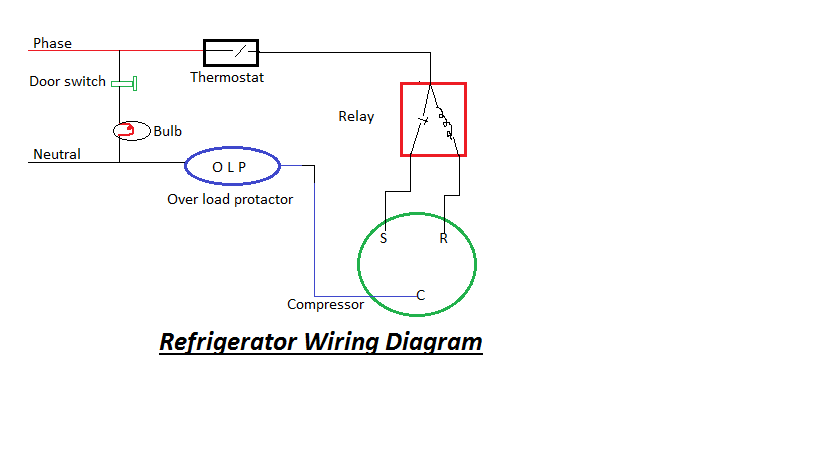
General technical explanation
A vapor compression cycle is used in most household refrigerators, refrigerator–freezers and freezers. In this cycle, a circulating refrigerant such as R134a enters a compressor as low-pressure vapor at or slightly below the temperature of the refrigerator interior. The vapor is compressed and exits the compressor as high-pressure superheated vapor. The superheated vapor travels under pressure through coils or tubes that make up the condenser; the coils or tubes are passively cooled by exposure to air in the room. The condenser cools the vapor, which liquefies. As the refrigerant leaves the condenser, it is still under pressure but is now only slightly above room temperature. This liquid refrigerant is forced through a metering or throttling device, also known as an expansion valve (essentially a pin-hole sized constriction in the tubing) to an area of much lower pressure. The sudden decrease in pressure results in explosive-like flash evaporation of a portion (typically about half) of the liquid. The latent heat absorbed by this flash evaporation is drawn mostly from adjacent still-liquid refrigerant, a phenomenon known as auto-refrigeration. This cold and partially vaporized refrigerant continues through the coils or tubes of the evaporator unit. A fan blows air from the refrigerator or freezer compartment ("box air") across these coils or tubes and the refrigerant completely vaporizes, drawing further latent heat from the box air. This cooled air is returned to the refrigerator or freezer compartment, and so keeps the box air cold. Note that the cool air in the refrigerator or freezer is still warmer than the refrigerant in the evaporator. Refrigerant leaves the evaporator, now fully vaporized and slightly heated, and returns to the compressor inlet to continue the cycle.
Modern domestic refrigerators are extremely reliable because motor and compressor are integrated within a welded container, "sealed unit", with greatly reduced likelihood of leakage or contamination. By comparison, externally-coupled refrigeration compressors, such as those in automobile air conditioning, inevitably leak fluid and lubricant past the shaft seals. This leads to a requirement for periodic recharging and, if ignored, possible compressor failure.
An absorption refrigerator works differently from a compressor refrigerator, using a source of heat, such as combustion of liquefied petroleum gas, solar thermal energy or an electric heating element. These heat sources are much quieter than the compressor motor in a typical refrigerator. A fan or pump might be the only mechanical moving parts; reliance on convection is considered impractical.
The Peltier effect uses electricity to pump heat directly; refrigerators employing this system are sometimes used for camping, or in situations where noise is not acceptable. They can be totally silent (if a fan for air circulation is not fitted) but are less energy-efficient than other methods.
Other uses of an absorption refrigerator (or "chiller") include large systems used in office buildings or complexes such as hospitals and universities. These large systems are used to chill a brine solution that is circulated through the building.
Many modern refrigerator/freezers have the freezer on top and the refrigerator on the bottom. Most refrigerator-freezers—except for manual defrost models or cheaper units—use what appears to be two thermostats. Only the refrigerator compartment is properly temperature controlled. When the refrigerator gets too warm, the thermostat starts the cooling process and a fan circulates the air around the freezer. During this time, the refrigerator also gets colder. The freezer control knob only controls the amount of air that flows into the refrigerator via a damper system.[11] Changing the refrigerator temperature will inadvertently change the freezer temperature in the opposite direction. Changing the freezer temperature will have no effect on the refrigerator temperature. The freezer control may also be adjusted to compensate for any refrigerator adjustment.
This means the refrigerator may become too warm. However, because only enough air is diverted to the refrigerator compartment, the freezer usually re-acquires the set temperature quickly, unless the door is opened. When a door is opened, either in the refrigerator or the freezer, the fan in some units stops immediately to prevent excessive frost build up on the freezer's evaporator coil, because this coil is cooling two areas. When the freezer reaches temperature, the unit cycles off, no matter what the refrigerator temperature is. Modern computerized refrigerators do not use the damper system. The computer manages fan speed for both compartments, although air is still blown from the freezer.
A few manufacturers offer dual compressor models. These models have separate freezer and refrigerator compartments that operate independently of each other, sometimes mounted within a single cabinet. Each has its own separate compressor, condenser and evaporator coils, insulation, thermostat, and door. Typically, the compressors and condenser coils are mounted at the top of the cabinet, with a single fan to cool them both.
This design, where no air passes between the two compartments, provides for more appropriate humidity levels and much tighter temperature control in each compartment. It also requires much less energy to operate, since each compressor & coolant system can be optimized for a specific temperature range. Further, opening the door of one compartment does not affect the temperature of the air or humidity level in the other compartment. Thus, it avoids many of the disadvantages of the much more common single compressor designs described above, although at a higher initial cost and increased system noise. Manufacturers of such designs argue that the increased cost is compensated over time due to reduced energy use and less food waste due to reduced spoilage.
"Ultra-cold" or "ultra-low temperature (ULT)" (typically -80 C) freezers, as used for storing biological samples, also generally employ two stages of cooling, but in cascade. The lower temperature stage uses methane, or a similar gas, as a refrigerant, with its condenser kept at around -40 C by a second stage which uses a more conventional refrigerant. Well known brands include Forma and Revco (both now Thermo Scientific) and Thermoline. For much lower temperatures (around -196 C), laboratories usually purchase liquid nitrogen, kept in a Dewar flask, into which the samples are suspended.
Features
Newer refrigerators may include:
- Automatic defrosting
- A power failure warning that alerts the user by flashing a temperature display. It may display the maximum temperature reached during the power failure, and whether frozen food has defrosted or may contain harmful bacteria.
- Chilled water and ice from a dispenser in the door. Water and ice dispensing became available in the 1970s. In some refrigerators, the process of making ice is built-in so the user doesn't have to manually use ice trays. Some refrigerators have water chillers and water filtration systems.
- Cabinet rollers that lets the refrigerator roll out for easier cleaning
- Adjustable shelves and trays
- A status indicator that notifies when it is time to change the water filter
- An in-door ice caddy, which relocates the ice-maker storage to the freezer door and saves approximately 60 litres (2 cu ft) of usable freezer space. It is also removable, and helps to prevent ice-maker clogging.
- A cooling zone in the refrigerator door shelves. Air from the freezer section is diverted to the refrigerator door, to cool milk or juice stored in the door shelf.
- A drop down door built into the refrigerator main door, giving easy access to frequently used items such as milk, thus saving energy by not having to open the main door.
- A Fast Freeze function to rapidly cool foods by running the compressor for a predetermined amount of time and thus temporarily lowering the freezer temperature below normal operating levels. It is recommended to use this feature several hours before adding more than 1 kg of unfrozen food to the freezer. For freezers without this feature, lowering the temperature setting to the coldest will have the same effect.
Early freezer units accumulated ice crystals around the freezing units. This was a result of humidity introduced into the units when the doors to the freezer were opened condensing on the cold parts, then freezing. This frost buildup required periodic thawing ("defrosting") of the units to maintain their efficiency. Manual Defrost (referred to as Cyclic) units are still available. Advances in automatic defrosting eliminating the thawing task were introduced in the 1950s, but are not universal, due to energy performance and cost. These units used a counter that only defrosted the freezer compartment (Freezer Chest) when a specific number of door openings had been made. The units were just a small timer combined with an electrical heater wire that heated the freezer's walls for a short amount of time to remove all traces of frost/frosting. Also, early units featured freezer compartments located within the larger refrigerator, and accessed by opening the refrigerator door, and then the smaller internal freezer door; units featuring an entirely separate freezer compartment were introduced in the early 1960s, becoming the industry standard by the middle of that decade. These older freezer compartments were the main cooling body of the refrigerator, and only maintained a temperature of around −6 °C (21 °F), which is suitable for keeping food for a week.
In the early 1950s, the butter conditioner's patent was filed and published by the inventor Nave Alfred E. This feature was supposed to "provide a new and improved food storage receptacle for storing butter or the like which may quickly and easily be removed from the refrigerator cabinet for the purpose of cleaning."[13] Because of the high interest to the invention, companies in UK, New Zealand, and Australia started to include the feature into the mass fridge production and soon it became a symbol of the local culture. However, not long after that it was removed from production as according to the companies this was the only way for them to meet new ecology regulations and they found it inefficient to have a heat generating device inside a fridge.
Later advances included automatic ice units and self compartmentalized freezing units.
An increasingly important environmental concern is the disposal of old refrigerators— initially because freon coolant damages the ozone layer—but as older generation refrigerators wear out, the destruction of CFC-bearing insulation also causes concern. Modern refrigerators usually use a refrigerant called HFC-134a (1,1,1,2-Tetrafluoroethane), which does not deplete the ozone layer, instead of Freon. A R-134a is now becoming very uncommon in Europe. Newer refrigerants are being used instead. The main refrigerant now used is R-600a, or isobutane which has a smaller effect on the atmosphere if released. There have been reports of refrigerators exploding if the refrigerant leaks isobutane in the presence of a spark. If the coolant leaks into the fridge, at times when the door is not being opened (such as overnight) the concentration of coolant in the air within the fridge can build up to form an explosive mixture that can be ignited either by a spark from the thermostat or when the light comes on as the door is opened, resulting in documented cases of serious property damage and injury or even death from the resulting explosion.[14]
Disposal of discarded refrigerators is regulated, often mandating the removal of doors; children playing hide-and-seek have been asphyxiated while hiding inside discarded refrigerators, particularly older models with latching doors. Since 2 August 1956, under U.S. federal law, refrigerator doors are no longer permitted to latch so they cannot be opened from the inside.[15] Modern units use a magnetic door gasket that holds the door sealed but allows it to be pushed open from the inside.[16] This gasket was invented, developed and manufactured by Max Baermann (1903-1984) of Bergisch Gladbach/Germany.[17]
Types of domestic refrigerators
Domestic refrigerators and freezers for food storage are made in a range of sizes. Among the smallest is a 4 L Peltier refrigerator advertised as being able to hold 6 cans of beer. A large domestic refrigerator stands as tall as a person and may be about 1 m wide with a capacity of 600 L. Some models for small households fit under kitchen work surfaces, usually about 86 cm high. Refrigerators may be combined with freezers, either stacked with refrigerator or freezer above, below, or side by side. A refrigerator without a frozen food storage compartment may have a small section just to make ice cubes. Freezers may have drawers to store food in, or they may have no divisions (chest freezers).
Refrigerators and freezers may be free-standing, or built into a kitchen.
Three distinct classes of refrigerator are common:
- Compressor refrigerators are by far the most common type; they make a noticeable noise, but are most efficient and give greatest cooling effect. Portable compressor refrigerators for recreational vehicle (RV) and camping use are expensive but effective and reliable. Refrigeration units for commercial and industrial applications can be made in various sizes, shapes and styles to fit customer needs. Commercial and industrial refrigerators may have their compressors located away from the cabinet (similar to split system air conditioners) to reduce noise nuisance and reduce the load on air conditioning in hot weather.
- Absorption refrigerators may be used in caravans and trailers, and dwellings lacking electricity, such as farms or rural cabins, where they have a long history. They may be powered by any heat source: gas (natural or propane) or kerosene being common. Models made for camping and RV use often have the option of running (inefficiently) on 12 volt battery power.
- Solar refrigerators and Thermal mass refrigerators are designed to reduce electrical consumption. Solar refrigerators have the added advantage that they do not use refrigerants that are harmful to the environment or flammable. Typical solar designs are absorption refrigerators that use ammonia as the working gas, and employ large mirrors to concentrate sufficient sunlight to reach the temperature required to free gaseous ammonia from the solvent.[18][19] Most thermal mass refrigerators are designed to use electricity intermittently. As these units are heavily insulated, cooling load is limited primarily to heat introduced by new items to be refrigerated, and ambient air transfer when the unit is open. Very little power is therefore required if opened infrequently.
- Peltier refrigerators are powered by electricity, usually 12 volt DC, but mains-powered wine coolers are available. Peltier refrigerators are inexpensive but inefficient and become progressively more inefficient with increased cooling effect; much of this inefficiency may be related to the temperature differential across the short distance between the "hot" and "cold" sides of the Peltier cell. Peltier refrigerators generally use heat sinks and fans to lower this differential; the only noise produced comes from the fan. Reversing the polarity of the voltage applied to the Peltier cells results in a heating rather than cooling effect.
Other specialised cooling mechanisms may be used for cooling, but have not been applied to domestic or commercial refrigerators.
- Magnetic refrigerators are refrigerators that work on the magnetocaloric effect. The cooling effect is triggered by placing a metal alloy in a magnetic field.[20]
- Acoustic refrigerators are refrigerators that use resonant linear reciprocating motors/alternators to generate a sound that is converted to heat and cold using compressed helium gas. The heat is discarded and the cold is routed to the refrigerator.
Energy efficiency
In a house without air-conditioning (space heating and/or cooling) refrigerators consumed more energy than any other home device. In the early 1990s a competition was held among the major manufacturers to encourage energy efficiency. Current US models that are Energy Star qualified use 50% less energy than the average models made in 1974. The most energy-efficient unit made in the US consumes about half a kilowatt-hour per day (equivalent to 20 W continuously). But even ordinary units are quite efficient; some smaller units use less than 0.2 kWh per day (equivalent to 8 W continuously). Larger units, especially those with large freezers and icemakers, may use as much as 4 kW·h per day (equivalent to 170 W continuously). The European Union uses a letter-based mandatory energy efficiency rating label instead of the Energy Star; thus EU refrigerators at the point of sale are labelled according to how energy-efficient they are.
For US refrigerators, the Consortium on Energy Efficiency (CEE) further differentiates between Energy Star qualified refrigerators. Tier 1 refrigerators are those that are 20% to 24.9% more efficient than the Federal minimum standards set by the National Appliance Energy Conservation Act (NAECA). Tier 2 are those that are 25% to 29.9% more efficient. Tier 3 is the highest qualification, for those refrigerators that are at least 30% more efficient than Federal standards. About 82% of the Energy Star qualified refrigerators are Tier 1, with 13% qualifying as Tier 2, and just 5% at Tier 3.
Besides the standard style of compressor refrigeration used in normal household refrigerators and freezers, there are technologies such as absorption refrigeration and magnetic refrigeration. Although these designs generally use a much larger amount of energy compared to compressor refrigeration, other qualities such as silent operation or the ability to use gas can favor these refrigeration units in small enclosures, a mobile environment or in environments where unit failure would lead to devastating consequences.
Many refrigerators made in the 1930s and 1940s were far more efficient than most that were made later. This is partly attributable to the addition of new features, such as auto-defrost, that reduced efficiency. Additionally, after World War 2, refrigerator style became more important than efficiency. This was especially true in the USA in the 1970s, when side-by-side models (known as American fridgefreezers outside of the US) with ice dispensers and water chillers became popular. However, the reduction in efficiency also arose partly from reduction in the amount of insulation to cut costs.
Today
Because of the introduction of new energy efficiency standards, refrigerators made today are much more efficient than those made in the 1930s; they consume the same amount of energy while being three times as large.
The efficiency of older refrigerators can be improved by defrosting (if the unit is manual defrost) and cleaning them regularly, replacing old and worn door seals with new ones, adjusting the thermostat to accommodate the actual contents (a refrigerator needn't be colder than 4 °C (39 °F) to store drinks and non-perishable items) and also replacing insulation, where applicable. Some sites recommend you clean condenser coils every month or so on units with coils on the rear. It has been proven that this does very little for improving efficiency, however, the unit should be able to "breathe" with adequate spaces around the front, back, sides and above the unit. If the refrigerator uses a fan to keep the condenser cool, then this must be cleaned, at the very least, yearly.
Frost-free refrigerators or freezers use electric fans to cool the appropriate compartment. This could be called a "fan forced" refrigerator, whereas manual defrost units rely on colder air lying at the bottom, versus the warm air at the top to achieve adequate cooling. The air is drawn in through an inlet duct and passed through the evaporator where it is cooled, the air is then circulated throughout the cabinet via a series of ducts and vents. Because the air passing the evaporator is supposedly warm and moist, frost begins to form on the evaporator (especially on a freezer's evaporator). In cheaper and/or older models, a defrost cycle is controlled via a mechanical timer. This timer is set to shut off the compressor and fan and energize a heating element located near or around the evaporator for about 15 to 30 minutes at every 6 to 12 hours. This melts any frost or ice build up and allows the refrigerator to work normally once more. It is believed that frost free units have a lower tolerance for frost, due to their air-conditioner like evaporator coils. Therefore, if a door is left open accidentally (especially the freezer), the defrost system may not remove all frost, in this case, the freezer (or refrigerator) must be defrosted
If the defrosting system melts all the ice before the timed defrosting period ends, then a small device (called a defrost limiter) acts like a thermostat and shuts off the heating element to prevent too large a temperature fluctuation, it also prevents hot blasts of air when the system starts again, should it finish defrosting early. On some early frost-free models, the defrost limiter also sends a signal to the defrost timer to start the compressor and fan as soon as it shuts off the heating element before the timed defrost cycle ends. When the defrost cycle is completed, the compressor and fan are allowed to cycle back on.
Frost-free refrigerators, including some early frost free refrigerator/freezers that used a cold plate in their refrigerator section instead of airflow from the freezer section, generally don't shut off their refrigerator fans during defrosting. This allows consumers to leave food in the main refrigerator compartment uncovered, and also helps keep vegetables moist. This method also helps reduce energy consumption, because the refrigerator is above freeze point and can pass the warmer-than-freezing air through the evaporator or cold plate to aid the defrosting cycle.
Regarding total life-cycle costs, many governments offer incentives to encourage recycling of old refrigerators. One example is the Phoenix refrigerator program launched in Australia. This government incentive picked up old refrigerators, paying their owners for "donating" the refrigerator. The refrigerator was then refurbished, with new door seals, a thorough cleaning and the removal of items, such as the cover that is strapped to the back of many older units. The resulting refrigerators, now over 10% more efficient, were then distributed to low income families.
With the advent of digital inverter compressors, the energy consumption is even further reduced than a single-speed induction motor compressor, and thus contributes far less in the way of greenhouse gases.
Effect on lifestyle
The refrigerator allows the modern family to keep food fresh for longer than before. The most notable improvement is for meat and other highly perishable wares, which needed to be refined to gain anything resembling shelf life. (On the other hand, refrigerators and freezers can also be stocked with processed, quick-cook foods that are less healthy.) Refrigeration in transit makes it possible to enjoy food from distant places.
Dairy products, meats, fish, poultry and vegetables can be kept refrigerated in the same space within the kitchen (although raw meat should be kept separate from other food for reasons of hygiene).
Freezers allow people to buy food in bulk and eat it at leisure, and bulk purchases save money. Ice cream, a popular commodity of the 20th century, could previously only be obtained by traveling to where the product was made and eating it on the spot. Now it is a common food item. Ice on demand not only adds to the enjoyment of cold drinks, but is useful for first-aid, and for cold packs that can be kept frozen for picnics or in case of emergency.
Temperature zones and ratings
Some refrigerators are now divided into four zones to store different types of food:
- −18 °C (0 °F) (freezer)
- 0 °C (32 °F) (meat zone)
- 5 °C (41 °F) (cooling zone)
- 10 °C (50 °F) (crisper)
The capacity of a refrigerator is measured in either liters or cubic feet. Typically the volume of a combined refrigerator-freezer is split with 1/3rds to 1/4th of the volume allocated to the freezer although these values are highly variable.
Temperature settings for refrigerator and freezer compartments are often given arbitrary numbers by manufacturers (for example, 1 through 9, warmest to coldest), but generally 3 to 5 °C (37 to 41 °F)[1] is ideal for the refrigerator compartment and −18 °C (0 °F) for the freezer. Some refrigerators must be within certain external temperature parameters to run properly. This can be an issue when placing units in an unfinished area, such as a garage. European freezers, and refrigerators with a freezer compartment, have a four star rating system to grade freezers.[citation needed]
- [∗] : min temperature = −6 °C (21 °F). Maximum storage time for (pre-frozen) food is 1 week
- [∗∗] : min temperature = −12 °C (10 °F). Maximum storage time for (pre-frozen) food is 1 month
- [∗∗∗] : min temperature = −18 °C (0 °F). Maximum storage time for (pre-frozen) food is between 3 and 12 months depending on type (meat, vegetables, fish, etc.)
- [∗∗∗∗] : min temperature = −18 °C (0 °F). Maximum storage time for pre-frozen or frozen-from-fresh food is between 3 and 12 months
Although both the three and four star ratings specify the same storage times and same minimum temperature of −18 °C (0 °F), only a four star freezer is intended for freezing fresh food, and may include a "fast freeze" function (runs the compressor continually, down to as low as −26 °C (−15 °F)) to facilitate this. Three (or fewer) stars are used for frozen food compartments that are only suitable for storing frozen food; introducing fresh food into such a compartment is likely to result in unacceptable temperature rises. This difference in categorisation is shown in the design of the 4-star logo, where the "standard" three stars are displayed in a box using "positive" colours, denoting the same normal operation as a 3-star freezer, and the fourth star showing the additional fresh food/fast freeze function is prefixed to the box in "negative" colours or with other distinct formatting.
Most European refrigerators include a moist cold refrigerator section (which does require (automatic) defrosting at irregular intervals) and a (rarely frost free) freezer section.
Commercial refrigeration temperatures
(from warmest to coolest)
- Refrigerators 35 °F to 38 °F, and not greater than maximum refrigerator temperature at 41 °F
- Freezer, Reach-in -10 °F to +5 °F
- Freezer, Walk-in -10 °F to 0 °F
- Freezer, Ice Cream -20 °F to -10 °F
XXX . XXX Wiring Diagram of Refrigerator and Water cooler
Refrigerator is basic need in domestic and commercial sector. It’s keep safe and fresh our food and beverage for long time. Now refrigerator is a requirement of every home. This is a mechanical unit and operated by electric energy. so it has electric fault many time due to short circuit and any other causes .
Due to electric fault we need to check it’s wiring. We can find the fault and do rewiring of refrigerator at home. There is a noticeable thing in the refrigerator diagram that bulb supply always give from thermostat inlet supply. Because when the thermostat cut of the supply of compressor than we open the door bulb will give light.
Wiring Diagram of Refrigerator and Water cooler
Thus , water cooler is often use in offices and public places. It keeps water cool. it’s also electric energy operated equipment. It has also electric fault. I can help you to shortout the electric fault problem. Refrigerator and water cooler wiring diagram are mention below. With the help of these diagrams you can find fault and do rewiring.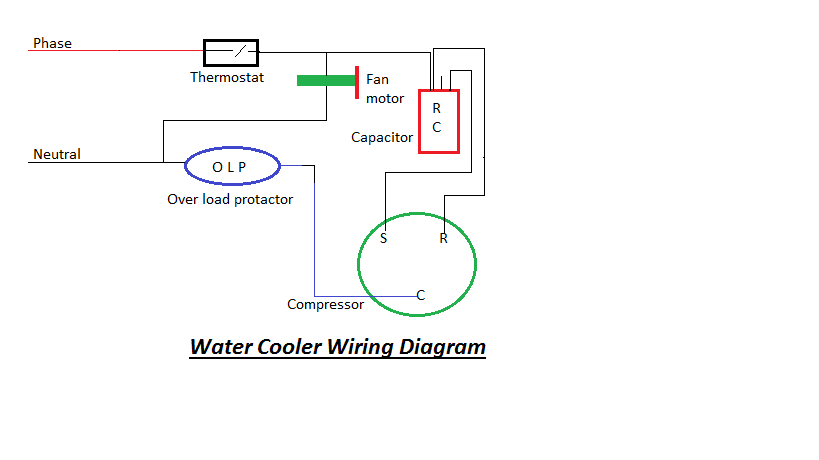

Above we had explained you about Wiring Diagram of Refrigerator and Water cooler ,
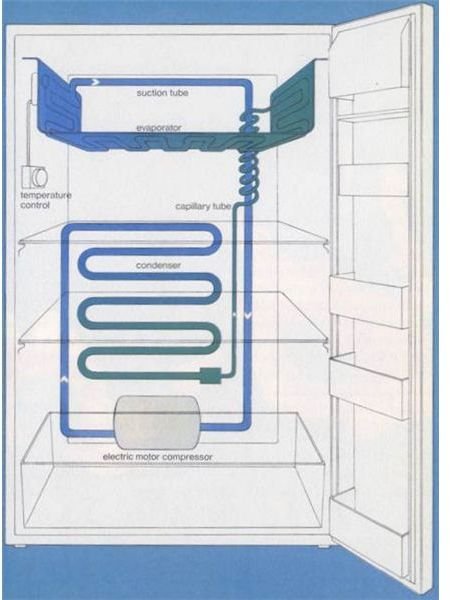

Electrical Circuit Diagram Refrigerator Inside
Ice Build Up In Fridges & Freezers
This is a very common problem and there's quite a number of things that can cause the problem of overfreezing occurring in either a fridge, fridge freezer or freezer. I'll go through the common faults that can occur on any then to the ones that can be specific to each different type of refrigeration product.
This article should explain the basics when you get an appliance overfreezing and the likely things that you can try for yourself, but if you're unsure then you will need a professional to sort it out and please, please be safe as water and electricity are very dangerous bedfellows.
Two Types Of Ice Build Up
Scientifically we have no idea how many types of ice that there are, I've no need to know but what we do know is that from a service technician's point of view at least, there are two types of ice that cause problems in refrigeration products.
To know where to start looking for the problem you first have to understand what the symptoms are actually telling you. Quite often we will hear from people that, "there's a lump of ice in the fridge" or "it's all iced up" followed by, "what' likely to be wrong and how much will it cost to put right?" and, to be honest, this isn't enough information for us to be ac curate.
 These days it gets still more complex as electronic controls and sensors have taken over from traditional thermostats making the chore of remote diagnostics on a fridge or freezer far harder than they ever were in the past. Like most things, technology marches on.
These days it gets still more complex as electronic controls and sensors have taken over from traditional thermostats making the chore of remote diagnostics on a fridge or freezer far harder than they ever were in the past. Like most things, technology marches on.Powdered Ice
The first and most common of these is what looks like snow for all the world inside a freezer (or freezer section of a fridge freezer) or a fridge with an icebox in it. You'll notice that this has a "powdery" type of texture to it and is formed over a long period of time.
An example is shown in the photograph to the right.
This type of ice is formed by condensation. In other words warm air from outside the appliance is creeping in somehow, condensing when it meets the cold air inside and then forming ice. This is why it is "powdery" ice as it is formed from tiny droplets of condensing water.
If you see this sort of ice in the machine then you are looking for some sort of air ingress.
Solid Ice
The next type is less common and is often seen on the base of chest freezers (more on that later) as well as anywhere that water leaks and becomes frozen. This type of ice formation is cause by water and will be smooth and very dense, basically like a large ice cube but often not as clear as it is formed from layer upon layer of water leaking onto the one area.
This sort of ice will always indicate some sort of water leakage whether it appears inside the unit, quite common on the likes of the US style fridges where water enters to enable the use of an ice-maker, or on the outside which can also happen.
If you see this type of ice then you are looking for a water leak of some kind.
Defrosting Your Fridge Or Freezer
If you now know that you've got the first type of ice you will also know that it is because of some kind of air ingress. In small under-counter fridges with an ice box this happens naturally as the outer door is opened an closed over time. Hence the need to manually defrost these units from time to time.
We honestly cannot be forceful enough on this point. The chances are that, if you go near any refrigeration intending to defrost it with a sharp implement you will kill it, if you don't you got off lucky.
If this does happen do not expect any help from the manufacturer or insurer under any form of warranty as it is treated as "customer misuse" and they will not honour a warranty repair or replacement for this fault. And we know when people have done this, it's very easy for an experienced engineer to tell.
The safest way to defrost an appliance is to allow it to naturally defrost over time and this also does do it in the most comprehensive way.
There are other tricks of course, such as sprays that melt ice (basically de-icer) and the use of hot air guns and hairdryers but using an electrical appliance to melt water is a very dangerous business and we strongly advise against it for safety reasons.
Ice On The Outside Of Your Fridge Or Freezer
It is not extremely common but it does happen and chest freezers, especially in cold damp environments suffer from this more than most.
Should you have ice on the outside of your fridge freezer it will most likely be at the bottom, near the feet. This will be the smooth solid type of ice and has been caused by the cold air of the fridge coming into contact with the warm air outside it or from water leaking through a hole in the fridge freezer.
Some older Hotpoint fridge freezers suffered terribly from this as water leaked over time from the freezer into the insulation (the foam that insulates the cold from the warm air outside), the insulation would break down losing its ability to keep the two separate and the water that fell down as well as the condensation from the process would produce a large ball of ice at the bottom of the door. There is no cure, the machine's life is at an end.
Likewise freezers in garages or basements often suffer from this phenomena for several reasons, but the upshot of it is that most are not designed for these environments or extremes of temperature which they can be subjected to in the likes of a garage or garden shed in particular.
It is not unusual to come across a chest freezer with an ice ball underneath it, again it is terminal.
Often, if you get an ice ball on the inside, often in the inside of a fridge the situation is the same but it is worth having an engineer check it for you, he is unlikely be able to diagnose the problem remotely.
Water Leaks
Leaking water from ice dispensers or drinks dispensers can cause solid ice either in a fridge or freezer section and this is something to look for.
Sometimes it can just be a spillage issue, but more often than not you're going to need someone that knows what they're doing to trace the fault for you. This is due to the fact that these sorts of devices are generally fitted to the like of the large US style fridge freezers and they can be technically complex and certainly not for the general DIY'r.
Air Causing Overfreezing
This is, by far and away, the most common cause of overfreezing probably equal to, if not greater than that of a thermostat or temperature sensor fault. As I explained earlier, this is due to air ingress.
Things to check for when you spot this are as follows:
- Are the door seal/s sound?
- Do the door seal/s actually seal against the cabinet?
- Is the door/s closing correctly?
- Do the door seal/s look distorted in some way?
- Are the door seal/s split or torn?
If the answer to any of those questions is yes then you've probably just found the problem yourself.
If you see a gap and the door is not closing properly then they can often be adjusted slightly to compensate. It's just a case of aligning the door, or doors, again to their proper position.
 It is common for people to miss this when swapping the doors from hinging on one side to the other which you can do on many fridges. Basically the door is not adjusted correctly and allows air ingress but, be aware, some manufacturers will not cover the cost of an engineer to adjust these under their warranty, as far as they are concerned this would be an installation fault, this is known as "mis-installation".
It is common for people to miss this when swapping the doors from hinging on one side to the other which you can do on many fridges. Basically the door is not adjusted correctly and allows air ingress but, be aware, some manufacturers will not cover the cost of an engineer to adjust these under their warranty, as far as they are concerned this would be an installation fault, this is known as "mis-installation".
Watch out, especially on integrated fridges and freezers for the outer furniture door (the wooden kitchen door) catching on the adjacent one as they have not been aligned correctly. This is a very common problem with many of these types of appliances and again the caveat of "mis-installation" again applies.
If the door seal seems out of shape or compressed it can be brought back into shape by applying heat from a warm hairdryer for a few minutes and very often saving the need to change the door seal or whole door.
If the door seal is split or torn it will require to be replaced.
Other Common Fridge & Freezer Issues
Other issues are the likes of condensation. Strangely enough this can happen when lots of fresh food is placed in a fridge or freezer.
In the photograph you can clearly see the condensation produced in the salad drawer of this Smeg fridge when lots of fresh vegetables are placed in the fridge. The reason is that, to an extent, vegetables "breath"and cause condensation.
It took us a while to work that one out the first time we saw it!
Over freezing is also a common sign of a failed thermostat as well. But in the case of a failed thermostat the machine will just cool and cool, not cutting off when it reaches the correct temperature. In effect, especially in fridges, this will cause everything inside to freeze solid, it will not cause an ice build up over time.
Domestic Refrigerator Parts and their Working
Parts of the Domestic Refrigerator and how they Work
The domestic refrigerator is one found in almost all the homes for storing food, vegetables, fruits, beverages, and much more. This article describes the important parts of the domestic refrigerator and also their working. The parts of domestic refrigerator can be categorized into two categories: internal and external. Let see these in details along with their images.Internal Parts of the Domestic Refrigerator
The internal parts of the refrigerator are ones that carry out actual working of the refrigerator. Some of the internal parts are located at the back of the refrigerator, and some inside the main compartment of the refrigerator. Some internal parts of the domestic refrigerator are (please refer the figure above):- 1) Refrigerant: The refrigerant flows through all the internal parts of the refrigerator. It is the refrigerant that carries out the cooling effect in the evaporator. It absorbs the heat from the substance to be cooled in the evaporator (chiller or freezer) and throws it to the atmosphere via condenser. The refrigerant keeps on recirculating through all the internal parts of the refrigerator in cycle.2) Compressor: The compressor is located at the back of the refrigerator and in the bottom area. The compressor sucks the refrigerant from the evaporator and discharges it at high pressure and temperature. The compressor is driven by the electric motor and it is the major power consuming devise of the refrigerator.3) Condenser: The condenser is the thin coil of copper tubing located at the back of the refrigerator. The refrigerant from the compressor enters the condenser where it is cooled by the atmospheric air thus losing heat absorbed by it in the evaporator and the compressor. To increase the heat transfer rate of the condenser, it is finned externally.
4) Expansive valve or the capillary: The refrigerant leaving the condenser enters the expansion devise, which is the capillary tube in case of the domestic refrigerators. The capillary is the thin copper tubing made up of number of turns of the copper coil. When the refrigerant is passed through the capillary its pressure and temperature drops down suddenly.
- 5) Evaporator or chiller or freezer: The refrigerant at very low pressure and temperature enters the evaporator or the freezer. The evaporator is the heat exchanger made up of several turns of copper or aluminum tubing. In domestic refrigerators the plate types of evaporator is used as shown in the figure above. The refrigerant absorbs the heat from the substance to be cooled in the evaporator, gets evaporated and it then sucked by the compressor. This cycle keeps on repeating.6) Temperature control devise or thermostat: To control the temperature inside the refrigerator there is thermostat, whose sensor is connected to the evaporator. The thermostat setting can be done by the round knob inside the refrigerator compartment. When the set temperature is reached inside the refrigerator the thermostat stops the electric supply to the compressor and compressor stops and when the temperature falls below certain level it restarts the supply to the compressor.7) Defrost system: The defrost system of the refrigerator helps removing the excess ice from the surface of the evaporator. The defrost system can be operated manually by the thermostat button or there is automatic system comprising of the electric heater and the timer.Those were the some internal parts of the domestic refrigerator; now let us see the external parts of the refrigerator.
The external parts of the refrigerator are: freezer compartment, thermostat control, refrigerator compartment, crisper, refrigerator door compartment, light switch etc. External Visible Parts of the Refrigerator
The external parts of the compressor are the parts that are visible externally and used for the various purposes. The figure below shows the common parts of the domestic refrigerator and some them are described below:1) Freezer compartment: The food items that are to be kept at the freezing temperature are stored in the freezer compartment. The temperature here is below zero degree Celsius so the water and many other fluids freeze in this compartment. If you want to make ice cream, ice, freeze the food etc. they have to be kept in the freezer compartment.2) Thermostat control: The thermostat control comprises of the round knob with the temperature scale that help setting the required temperature inside the refrigerator. Proper setting of the thermostat as per the requirements can help saving lots of refrigerator electricity bills.3) Refrigerator compartment: The refrigerator compartment is the biggest part of the refrigerator. Here all the food items that are to be maintained at temperature above zero degree Celsius but in cooled condition are kept. The refrigerator compartment can be divided into number of smaller shelves like meat keeper, and others as per the requirement.4) Crisper: The highest temperature in the refrigerator compartment is maintained in the crisper. Here one can keep the food items that can remain fresh even at the medium temperature like fruits, vegetables, etc.- 5) Refrigerator door compartment: There are number of smaller subsections in the refrigerator main door compartment. Some of these are egg compartment, butter, dairy, etc.6) Switch: This is the small button that operates the small light inside the refrigerator. As soon the door of the refrigerator opens, this switch supplies electricity to the bulb and it starts, while when the door is closed the light from the bulb stops. This helps in starting the internal bulb only when required.
Refrigerator cycling on thermostat (cold control)
Modern Freezers
So now you know that vapor compression is the principle behind the freezer. But how exactly does it work? At the core is a fast-moving stream of vaporized refrigerant that goes through a cycle inside the freezer.
To get an idea of how it works, picture a river as it winds through the mountains and countryside en route to the ocean. Once it empties out, then it's taken up by clouds, turned into rain, and re-enters that river where it flows to the ocean again. Refrigerant flows and transforms from liquid to gas and back in a similar way.
Today, some of the most commonly used refrigerants are HFCs (hydrofluorocarbons). Other refrigerants, such as CFCs (chlorofluorocarbons) and HCFCs (hydrochlorofluorocarbons) are highly regulated -- and banned from use in many products -- in the United States since they were contribute to depleting the atmospheric ozone layer .
The refrigerant begins the cooling process as a vapor under low pressure. The first freezer component it enters is the compressor (usually found in the lower back of the freezer). The compressor squeezes the vapor's particles, which heats it up and converts it into a high-pressure state.
The hot, pressurized refrigerant is pumped by the compressor through a tube into the next component called a condenser. If you've ever touched the outside of your freezer and felt warmth, that's the heat coming off the condenser coils, which usually sit underneath or at the bottom of the freezer, where they can be exposed to room temperature air and cooled down. As the vapor travels through the condenser coils, it loses the heat but retains its high pressure. It is also converted into a moderately warm temperature.
The now-liquid refrigerant's inherent pressure pushes it through into the next component: the metering tube. This small structure regulates the vapor's pressure so it can head into the next component.
As the liquid refrigerant heads from the small metering tube into the larger evaporator, its pressure drops suddenly, causing it to convert back into a low-pressure vapor. The evaporator also absorbs the heat, which leads to a freezing cold vapor that keeps the unit's temperature cold enough for freezing your food. The vapor then goes back to the compressor to begin the process anew.
Vapor compression isn't the only way to create a super-cold food storage environment. On the next page, we'll talk about other freezing technologies and the different styles of freezers on the market today.
In your home, you probably have a refrigerator/freezer combination unit. Whether you have a side-by-side fridge/freezer appliance, the kind with the freezer on top, or one with the freezer on the bottom, the differences are few. Each freezer is a single unit, so they all use the same machinery described earlier in the pursuit of vapor compression. About the only difference is energy efficiency. The bottom-mount uses the least amount of power . Why? If the compressor is on the bottom, doesn't have to push vapor very far. On the side-by-side or top-freezer styles, the compressor has to force refrigerant through a tube to reach the freezer compartment.
Another kind of freezer is the standalone, also called a "deep freeze" or "sub-zero," although the latter is a trademarked name for a specific brand of freezer. They, too, operate on the basic principles of vapor-compression.
Have you ever worked in a restaurant and had to retrieve food from a large, walk-in commercial freezer? Again, these use vapor-compression; the only major benefit for this kind of unit is that many of them have reinforced aluminum floors which can hold up to 600 pounds (about 270 kilograms) of weight per square foot -- a very valuable concept in a high-volume restaurant (but which would be completely unnecessary for a family of four).
Whatever kind of freezer you use, be sure to keep the temperature low and consistent. Otherwise, you'll get a buildup of a freezer's worst enemy: frost. On the next page, we'll take a look at how frost occurs and what you can do to prevent it.

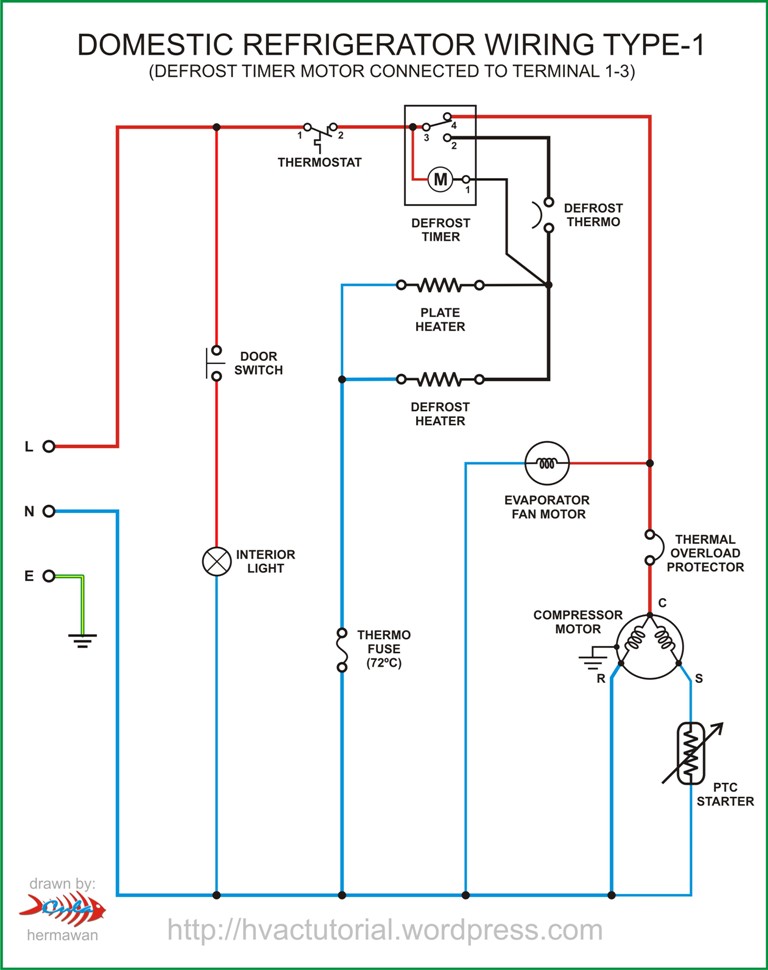

A compressor is used to raise pressure of the refrigerant
The worst thing that can happen to a freezer is frost, which isa thick, cold dusting of fine ice that covers everything inside the freezer turning it all into one big solid icy mess. What can cause frost?
- Opening it too often and allowing too much warm room temperature air in, which can shut down the freezer elements that are built to process only cold air
- Blocking air flow by pushing the freezer too close to a wall, which makes the condenser coils act less efficiently
- Having a loose rubber seal around the door, which allows that pesky room temperature air in
Basically, in each of these situations, warm air mixes with sub-freezing air. The result is frost. Many newer-model freezers have an automatic frost prevention feature, which regulates temperatures to keep the inside temperature consistently where it needs to be. If you don't have that feature, here are some other ways to prevent frost:
- Set your freezer's thermostat to 0 degrees Fahrenheit -- not too much colder or warmer .
- Open it only when you need to, so as to not wear down the rubber seal around the door.
- If your freezer has coils on the back, make sure you have at least 3 inches between the coils and the wall.
If you aren't able to get rid of frost as fast as it accumulates -- say your rubber seal is shot, an expensive internal part is overworked, or a coil is fried -- it might be time to get a replacement. Up next, we'll look at what you need to consider when it's time to purchase a new freezer.


Sticker shock aside, looking at new freezers might actually be fun. Depending on what your budget and needs are, today's freezers have all kinds of technologically advanced bells and whistles. Depending on which features you select, your new unit could cost anywhere from $500 to $4,000 or even more. Here a just a few of the features you might look for when considering your next freezer purchase:
- Digital external temperature regulator: This is a keypad where you tap in your freezer's desired temperature. It keeps you from having to reach into the back of a cold freezer to twist an icy knob that's frozen in place.
- Automatic ice-makers: Though they've been around for decades, icemakers in the door that you access externally will make your freezer last longer because that's one fewer time you don't have to reach inside and risk wear to the rubber seal.
- Cold water filter: You get fresh, chilled water dispensed from the freezer door.
- "Cooling zone" compartment: Available in some fridge/freezer combos is a hidden tube routing super-cold freezer air to a space in the fridge designed for storing items that perish quickly, such as milk.
- Automatic defrost: As we talked about earlier, this should prolong the life of your freezer so you won't have to go freezer shopping again anytime soon.
++++++++++++++++++++++++++++++++++++++++++++++++++++++++++++++++++++++++++
Stabilization Free - On using Compressor Automatic CW and CCW
+++++++++++++++++++++++++++++++++++++++++++++++++++++++++++++++++++++++++++


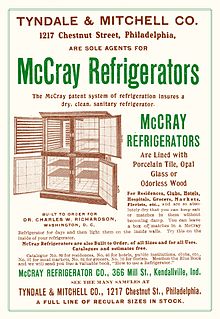
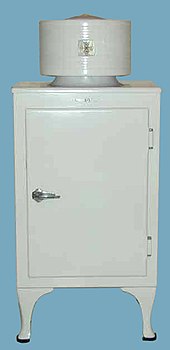
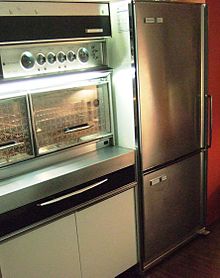


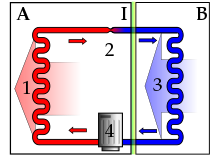





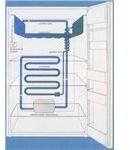
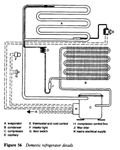
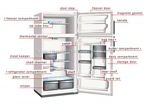
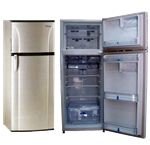
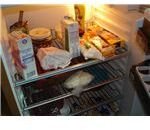


Great Post! Thanks for sharing the detailed information on Refrigerator's internal circuit system. If you want to protect your fridge and use it for a long time, then you must get Fridge Insurance in advance to avoid any end-time unexpected hassle.
BalasHapusThis is really interesting. Thanks for explaining circuit system so well. You must get Freezer Insurance in advance to use your freezer for a long time.
BalasHapusI read your blog, and I really like it. Elanpro holds proficiency in manufacturing the advanced Upright Freezer in Haryana, India at the least price range.
BalasHapusThank you for sharing such a great information about electric Refrigerator with circuit diagram.It is informative, it will help me to know more detailed information about Refrigerator equipment.I will share these information with my friends. I hope you will share some more information about Refrigeration equipment.
BalasHapusRefrigeration equipment
Refrigeration supply
Ice machine parts
Thanks for sharing information
BalasHapusBest Refrigerator (Fridge) list click here
Thank you for sharing such a great information about electronic circuit Refrigeration with images . It is informative, it will help me to know more detailed information about electronic circuit Refrigeration. I will share these information with my friends. I hope you will share some more information about Ice machine parts.
BalasHapusIce machine parts
Refrigeration equipment
Refrigeration supply
BalasHapusThanks for share your information. Your blog has been really great. I learned a lot from here.I hope you will give us such more awesome blogs. Thank you. The final word compressor fridge for virtually any adventure, whether It really is for that weekend, or each week lengthy journey. With a fully charged battery lasting around 3 days, Helux powered coolers will always be a requirement for virtually any experience
Hi..
BalasHapusI appreciate your Informative post and thanks for sharing.
Ultra low Deep freezer
Blue Star Combined Refrigerator
BalasHapusHi, Thank you so much for sharing all this wonderful info, Refrigerator Service Centre in Hyderabad
BalasHapusREFRIGERATOR REPAIR & SERVICE centres in hyderabad
plz contact us for further updates Thank You.
This is a really informative knowledge, Thanks for posting this informative Information. Mining Water Pump
BalasHapusRefrigerators are the most useful and most used appliance in every home for the sake of keeping fresh vegetables and fruits and curry and rice in it. Then if you raise any type of issue in the refrigerator then don't worry just make a call to the Panasonic Refrigerator Repair Service center Mumbai and then say about your details and warranty if your product is out of warranty then we will take to solve the issue in it. Then we give warranty on service and spare parts. After our service if you get any type of issue we will solve the issue for free.
BalasHapusPanasonic Refrigerator Repair Service center Mumbai
Bosch refrigerators are the one of the most quality and good condition products in case if you get any type of issue just make a call to the Bosch Refrigerator Repair Service center Mumbai our technicians will solve the issue in front of you in a few hours itself. We will produce the warranty on service and spare parts. In case after our service if you get any type of issue just call us we will solve the issue for free.
Bosch Refrigerator Repair Service center Mumbai
Siemens refrigerators are well quality products to use like they give very good condition products and many more. Then in case if you get any type of issue in the refrigerator just call Siemens Refrigerator Repair Service center Mumbai then tell about your details and non warranty details. If your product is out of warranty then we will solve the issue. We produce the warranty for our service and spare parts. We give a 90days warranty on service and 30days on spare parts.
Siemens Refrigerator Repair Service center Mumbai
Washing machine is the best home appliance to the household. Nowadays all are using the washing machine this was the best way to wash the clothes. We no need to spend time with wash the wash washing machine is automatically do their work. If you observe any issues on the washing machine no need to worry just contact us we have best technicians to solve the issues on the washing machine. We provide the best services to the customer Washing Machine Repair Service Center Mumbai
BalasHapusWe have best technicians to solve the any type of issues on the washing machine. Our technicians will gave the warranty to the customer so contact us we provide the doorstep services to the customer in washing machine we observe many type of issues technicians only know the issues on the washing machine so contact us by our website.
In our services center we provide the best services to the customer we have best technicians to solve the issues on the washing machine when you contact our services center login the complaint. Our services center taking few hours of time our technician will arrive at your doorstep and we provide the best technicians to the customer. Technicians will fix the issue of your home appliance washing machine these all are the common appliance in every single home. Washing machine is the best home appliances it is easy way to wash the clothes. If you observe any type of issues on the washing machine no need to worry just contact us by our website. We provide the best services to the customer so contact us by our website LG Washing Machine Repair Service Center Mumbai
Our technicians will gave the warranty to the washing machine we take only 300/- for visit charges. So if you get any type of issues in the washing machine contact us.
Washing machine is the easy way to wash the clothes it was the best home appliances to the customer. The washing machine is used to wash the clothes we no need to put the physical energy washing machine only do their work automatically so use the washing machine we no need to wash the clothes by the hand we have to put the more physical effect. If you get washing machine means no need to worry that machine only wash the clothes automatically while using the washing machine if you observe any issues on the washing machine no need to worry just contact us by our website we provide the best services to the customer Samsung Washing Machine Repair Service Center Mumbai
Washing machine is the best home appliance to the household. Nowadays all are using the washing machine this was the best way to wash the clothes. We no need to spend time with wash the wash washing machine is automatically do their work.
Really very informative and the way you present your information attracts visitors to read a more informative blog from your website. So I look forward to seeing the next update. Find the best Sub Zero Freezers.
BalasHapusProfessional Refrigerator service in Dubai Here visit now https://www.hometech.ae/service/refrigerator-service/
BalasHapusBuy fridge online
BalasHapusIncredible article, much obliged for sharing such a decent article. Honestly love your blog, I Appreciate you composing additional fascinating articles about refrigerator sub zero.
BalasHapusThank you for sharing very informative information and check this best deep Ac Repair in Coimbatore India. And keep share more post.
BalasHapusKomentar ini telah dihapus oleh pengarang.
BalasHapusKomentar ini telah dihapus oleh pengarang.
BalasHapus